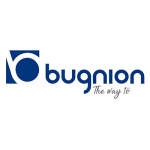The patentability of second and further medical uses in Europe is ensured by the combination of Article 53(c) and Article 54(5) of the European Patent Convention (EPC).
Under Article 53(c) EPC, methods of treatment of humans or animals are not patentable, but “this provision shall not apply to products, in particular substances or compositions, for use in any of these methods”.
This wording sets the fundamental principle that products and substances for use in a method of treatment of a human or animal bodies are not excluded from patentability, thereby paving the way for second and further medical use patents.
Article 54(5) EPC further adds that substances and compositions that are used in such a method do not lack the patentability criteria of novelty, even if the substance or composition itself is part of the state of the art, as long as the specific use of the substance or composition for such a method is not part of the state of the art. Thus, the novelty of a second or further medical use patent is derived from its new application.
Article 54(4) EPC was added during a major revision of the original 1973 EPC, which was performed in 2000 and entered into force in 2007. The addition of this article confirmed the practice developed by the case law of the European Patent Office (EPO) to allow the patentability of second and further medical uses of known compounds / compositions and drastically changed the way to claim second and further medical uses in Europe.
Background
Before 2007, second and further medical uses were protected using the ‘Swiss-type claim’ wording established by the landmark decision G5/83 of the Enlarged Board of Appeal of the EPO. This type of claim cited: “Use of a substance or composition X for the manufacture of a medicament for therapeutic application Z”.
The introduction of Article 54(4) EPC offered the legal basis to claim second and further medical uses with a claim formulation similar to the formulation used to claim first medical use. Article 54(4) EPC, already present in the original 1973 EPC, refers to the patentability of the first medical use of a substance. According to this article, the first use in medicine of a known compound can be protected. The claim formulation that has been allowed by the EPO to claim first medical uses is: “Compound X for use as a medicament”.
With a Notice from the EPO (OJ EPO 2010, 514) dated September 20 2010, the EPO decided, from that date onwards, to discontinue the practice of using Swiss-type claims to claim second or further medical uses for European patent applications having priority or filing date. Instead, the EPO introduced the use of the wording: “Compound or composition X for use in the treatment of disease Y”, which is still in use.
Second and further medical use patents are common tools used by the pharmaceutical industry to extend the period of patent protection of a drug further than the expiration of the ‘primary/base patent’ directed to the molecule. Second medical use patents can be directed to an entirely unknown indication, a previously known indication but in a new patient group, a new dosage form, or a new dosage regime of a known compound.
Skinny labelling
In order to sell a medicinal product or a pharmaceutical drug on the EU market, the product must receive marketing authorisation. This can be achieved for all EU member states via the centralised authorisation procedure, in which a single application is filed with the European Medicines Agency (EMA).
The procedures to request and obtain a marketing authorisation are set forth in Council Directive 2001/83/EC of 2001. In particular, Article 10 of the Directive states that generic manufacturers can obtain marketing authorisation for the generic version of a drug by relying on the safety and efficacy data of the originator once the originator’s data exclusivity period has expired.
Article 11 of the Directive establishes that a marketing authorisation request must contain the “Summary of the Product Characteristics” (SmPC), which includes the indication of the medical uses and dosages of a drug. In case of a generic drug, Article 11 allows the exclusion from the SmPC of indications or other information, such as dosages or forms of administration, which are still protected by a patent. This process is called ‘carving out’ or ‘skinny labelling’ and was introduced into the Directive with the clear aim to allow the marketing of generic drugs after the expiration of the primary patent, even if second or further medical use patents were still in force.
In the absence of this provision, the company owning one or more second medical use patents of the drug would be allowed to stop the entrance into market of the generic version of the drug as the SmPC of the drug would contain all the uses listed in it, including the uses that are still under patent protection.
Carving out the patented indications from the generic labelling does not always mean that this pharmaceutical would not, in practice, be used for those indications. In some instances, carving out is also not considered sufficient to avoid infringement of a second use patent. This is precisely what was decided by the Court of Milan in the recent case Novartis Pharma vs Medac Farma.
Court of Milan decision: background
In this case, judgment n. 11933/2022 was reached on January 10 2022. Novartis Pharma had been sued by Medac, which sought a declaration of invalidity of the Italian portion of the second medical use patents EP 3342411 (EP’411) and EP 3351246 (EP’246) relating to the active principle Everolimus marketed under the name “Afinitor” by Novartis, and a declaration of non-infringement of the Medac’s generic version, Everolimus Medac with respect to EP’411.
EP’246 and EP’411 relate respectively to the treatment of hormone receptor positive breast cancer (EP’246) and to the use of everolimus in treating Pancreatic Neuroendocrine Tumours (PNET) (EP’411).
Novartis in its reply brief requested the rejection of the plaintiff’s claims and – by way of counterclaim – lodged a declaration of infringement of EP’246 and EP’411, a request for an injunction, and a request for damages compensation.
Medac was the holder of the marketing authorisation (MA) of the generic drug Everolimus Medac based on the active ingredient Everolimus (indicated for the treatment of certain tumors including PNET and Breast cancer).
A series of carve-outs were made to the therapeutic indications of Evorolimus Medac in order to avoid interference with EP’246 (breast cancer indication). Medac pointed out that it had carved out any reference to the use for the treatment of breast cancer from the package leaflet and initiated the process to eliminate this indication also from the MA and SmPC. (At the time of the trial, this elimination was not yet completed).
During the proceedings, Novartis filed a motion for an interim injunction enforcing both patents and seeking an injunction against Medac in relation to both medical uses.
Medac argued that the second medical use patents were invalid.
Court of Milan decision: deliberation
In order to decide the case, especially with respect to the validity of the patent, the presiding judge Dr. Bellesi appointed a court adviser. This is a common practice in Italy for both validity and infringement patent proceedings where judges appoint a so-called ‘patent adviser’ from whom they request an opinion on the validity of the patent under issue and on the lamented infringement. Normally, these are patent attorneys with a relevant technical background in the patent field and proven experience in patent practice, and who are in the list of advisers held by the Court.
With respect to the validity of EP’246 (Italian portion), Novartis filed an opinion of another court adviser delivered in another preliminary proceeding brought by Novartis against a third company. This opinion found the patent valid with respect to the grounds of added-subject matter, sufficiency of disclosure, and an inventive step.
The court adviser decided that the previous opinion was well founded for all grounds under discussion, thereby confirming the validity of the patent.
With respect to the validity of the Italian portion of EP'411, the court adviser found the claimed invention to be sufficiently disclosed due to the plausibility of the solution. The patent did not contain data relating to composition containing Everolimus for the specific claimed use (treatment of PNET). However, the data present in the patent referred to several other tumour types, all of which had in common the fact that they were solid tumors, like PNET.
By applying the ‘plausibility’ criterion established by the case law of the EPO, the court adviser concluded that it was plausible that the claimed combination would be effective for the treatment of PNET, given the examples present in the patent that showed the efficacy of the claimed combination to treat several types of solid tumours. Therefore, a precise experiment relating to the treatment of PNET was unnecessary to support plausibility, and post-filing data could be used to demonstrate that the claimed combination was effective to treat PNET.
The court adviser also found that the patent was novel and inventive and did not go beyond the subject matter of the original patent application.
Regarding the validity of both patents, the Court agreed with the court adviser’s decision and most of the final decision issued by the Court reflected this.
Court of Milan decision: infringement of the two patents by the generic drug
With reference to EP'246, the court advisor underlined that Medac had removed the indication for the treatment of the breast cancer from the package leaflet and had filed a request to AIFA (the Italian Marketing Authorisation Authority) to remove the indication from the MA and the SmPC.
The Court decided that notwithstanding the acts performed by Medac in relation to the breast cancer indication, Medac was awarded tenders to supply the generic version of Everolimus to the regional health systems without any specification or limitation for the use of Everolimus. In addition, Novartis reported that since Medac was awarded the tenders, no further requests to supply Everolimus were received, arguing that this was the result of Medac’s tenders.
In view of these arguments, the Court decided that the circulation of the generic version of Everolimus should be further restricted in relation to the breast cancer indication (EP’246).
With reference to EP'411, the judgment on infringement was immediate as the PNET indication was present in the documentation provided by Medac.
The Court found that both matters met the urgency requirement as new regional tenders were about to be published with a starting price for Everolimus lowered to the price of the generic version. According to the Court, the immediate consequence was the high probability for the originator to lose the tenders and market shares, with the risk that the contracting authorities – even after an assessment at the end of proceedings on the merits favourable to Novartis – would not adjust the tender price for the supply of Everolimus.
Accordingly, the Court upheld the requests made by Novartis and thus preliminarily issued an injunction against:
The production, marketing or advertising of Everolimus Medac and/or any other drug containing Everolimus for use in the PNET and breast cancer indications;
The production, marketing, or advertising of Everolimus Medac and/or any other drug containing Everolimus without having taken all necessary and appropriate measures to prevent the drug from being used in the PNET and breast cancer indications, and without having taken the following measures:
Ensure that any MA and related SmPC and the package leaflet of any Medac product containing Everolimus did not contain any reference to the patented therapeutic indications;
For products already authorised with the indication Breast Cancer in the MA, SmPC and package leaflet, initiate and complete the process to modify the MA and to eliminate the Breast Cancer and PNET indications;
Inform in writing all interested parties and entities, including medical and pharmacist associations, public and private hospitals, local health service providers, procurement entities, and companies that manage databases (a list of which was provided by the Court) of the fact that medications containing Everolimus Medac are not indicated and should not be used for the patent-protected uses.
The Court also established the obligation for Medac to communicate in writing every time a commercial offer in a tender or any other king of offer was made that any product containing Everolimus was not to be used for the PNET and breast cancer indications.
In addition, the Court prohibited the transference and/or licensing of Medac's Everolimus MA to third parties unless the third parties commit in writing to comply with the stated measures.
The preliminary injunction decision of first instance was later upheld in the appeal decision issued on October 4 2021.
Final thoughts
This decision appears consistent with the European trend, according to which skinny labelling might not be sufficient to rule out infringement.
Indeed, in addition to a traditional order to refrain from selling the product for use in the protected indication, the Court ordered the generic company to refrain from selling the product unless the protected indication is carved out and unless the generic company has notified all relevant parties involved in the purchase and use of the product that the product is not indicated and must not be used in the protected indication.
Merits proceedings are still pending, and it will be interesting to see if the decision is confirmed.











